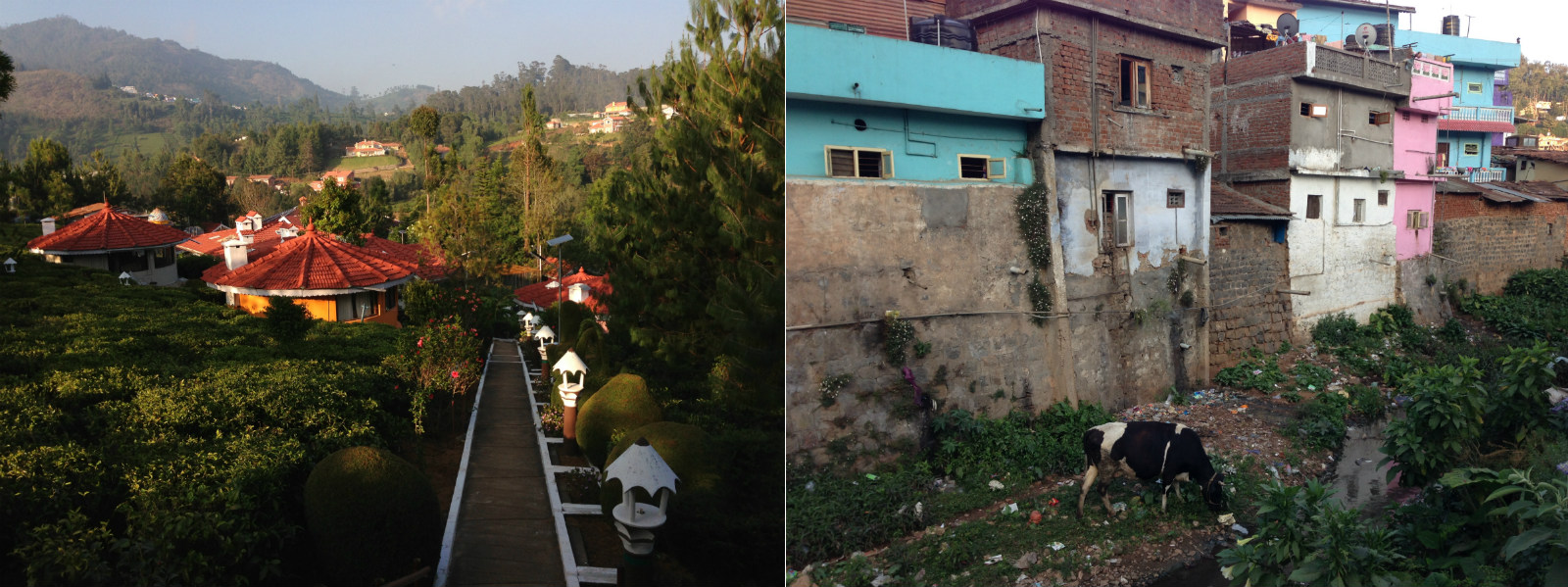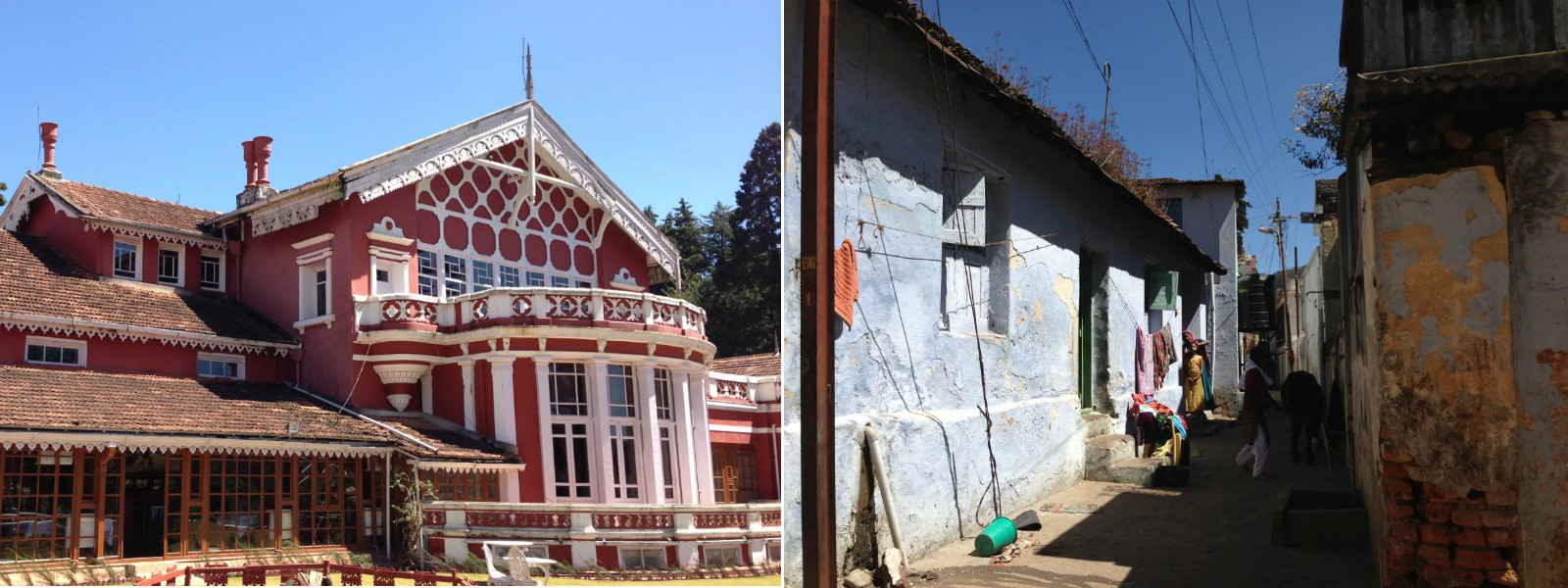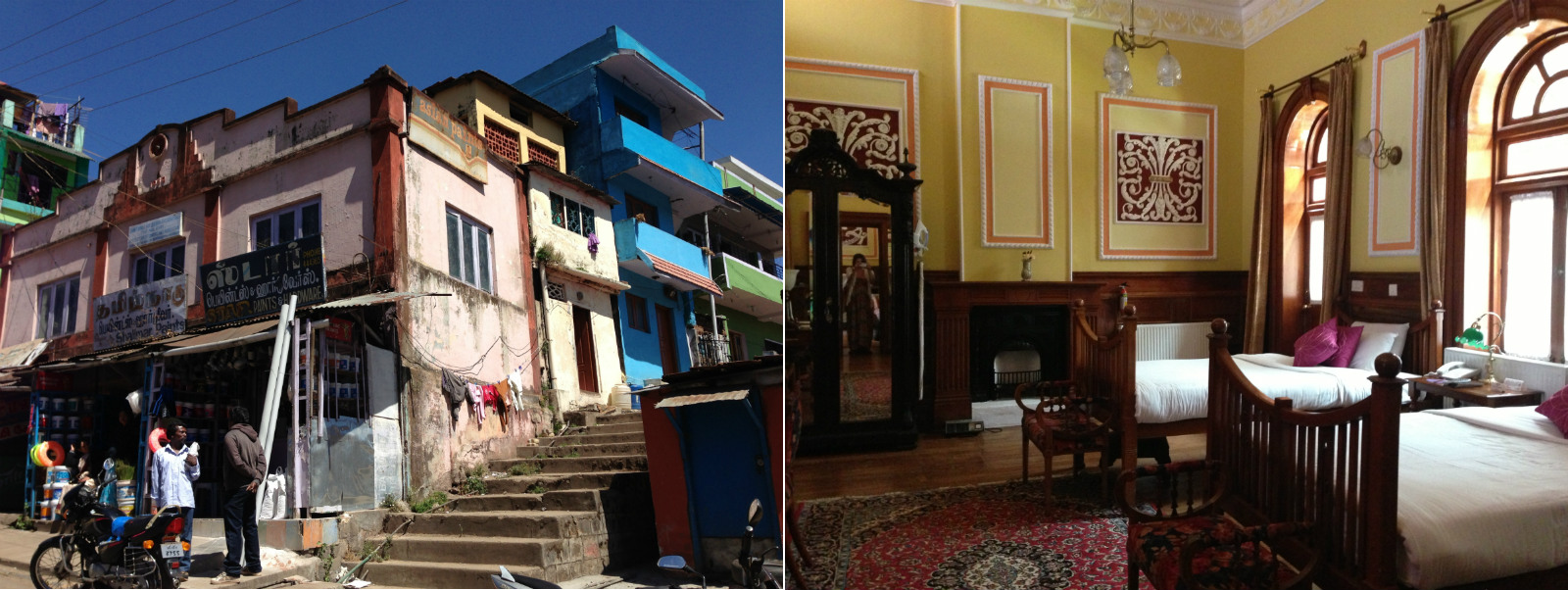I always dreamed of going to India and envisioned it as a place full of stone palaces and temples, exotic jungles, animals, and vibrant color; a place of golden secrets where elephants carry you along the way. As beautiful as my imagination wanted it to be, I knew that the country was like many others; peppered with poverty, political problems, and the effects of globalization. It has grown awkwardly, swelling in some places and deflated in others. It’s one of the few countries that suffers from the duality of being a developed nation as well as a third world country. When I went there I carried my fantasy with me even though I knew I’d have to create space for the other, more realistic half.
Arrival.
I looked for my name over a crowd of people and saw a man with white gloves carrying my arrival card. He took my bags and led me to a car where another man stood in a pressed uniform. He was part of the concierge at the Taj Mahal Palace Hotel and welcomed me to India. He opened the rear door and advised me not to roll the windows down. “AND, don’t give anyone money as it will attract many more.” Then, he wished me a pleasant stay and the driver started the car.
The Taj Mahal Palace Hotel was beautiful. I was led through security and then to my room by another person from the concierge. The smell of fresh lilies followed me through the rose hued lobby. My room was spacious and overlooked the Gateway of India. Within ten minutes my passport was returned to me from a seamless check in and I went to explore the hotel. Rich mahogany lined the perimeters of the furniture and corridor walls. Polished floors reflected light from glass chandeliers and lanterns.
I wandered through a glass door and down a corridor of columns with alabaster ceilings etched in old, Persian inspired details. A pool lay ahead. Lions carved of sandstone spouted clear, blue water back into the pool. Iron wrought tables and chairs with plush, white cushions sprinkled the courtyard. In through another door and more lilies. They were white, delicate, and sinfully fragrant; arranged to erupt out of large vases in each room. It was starting to feel like a fantasy.
Early the next morning I watched the sunrise: a rosy, purple haze glowing over the horizon. Breakfast was ordered to go. A very enthusiastic waiter presented me with a latte and a box of freshly baked croissants for my journey. I felt a deep happiness and satisfaction as the driver shut the door and we exited the hotel grounds. But, it would only last a moment. Soon, the buttery richness felt heavy in my stomach. A woman and child were standing on the side of the road. The child wore a loin cloth and was being rubbed down with a dirty, red rag by his mother. She splashed murky water over him and continued to wipe him down. The slums took over each side of the highway: dirt, garbage, tin, bony livestock, plastic tarps and bins; people blended into the slums as if they had been swallowed by it. I stared and the moment clung to me. Disgust replaced satisfaction; disgust with myself for the comforts I indulged in on a daily basis. The slums of Bombay (Mumbai) are famous but you can’t fathom why until you’re breathing heavy air while dirt seeps into your luxurious enclosure and settles on your skin.
I flew south into Coimbatore. It was a completely different scene than Bombay; rural and dusty. My taxi followed a straight path through the valley until we reached a narrow, spiraling road up into the mountains towards Coonoor. Families of monkeys lined the edges of our path and food stands jutted out of the woods. My destination lay down a dirt driveway behind white gates. A man in an old army uniform led the taxi in. The grounds were immaculate- colorful flowers, neatly trimmed grass and hedges lined the walkways next to small gardens of fruits, vegetables, and herbs. There was a yoga hall further up the property. It was a circular buildings with large glass windows peering over the mountainous landscape of forest and green tea fields.
During my stay all of the meals were prepared and placed before me. A lot of what was served came directly from the gardens on the property or the market in town. My first trip to the town left me feeling somewhat similar to my first night in Bombay. There were no slums but the homes and shops looked like they had been propped up by scraps of metal and wood. A local butcher chopped his meat as dust from cars blew into his wide open storefront. Hundreds of colorful buildings with chipping paint, tiny rectangular holes for windows, and pipes poking out of the sides were threaded together with concrete pathways. Cows grazed on litter strewn through dirt and patches of weeds; a small stream cut through the town carrying trash that clung to the muddy shoreline.
Stay.
The longer I spent in India, however, the more beautiful I found it. The initial culture shock wore off and led me to take a tuk tuk into town on my own and wander through the market place and various bakeries. I began to take my walks alone and explored the colorful villages on my way to town. The village homes were stacked on top of one another with narrow, cracked pathways that fit together haphazardly. I would weave through the village getting lost and feeling that the paths must have originally been scraps of old road. The interior of the homes had dirt floors and appeared to be swept incessantly. Occasionally, I noticed a couch and a TV in some of the dwellings. A mixture of clothing hung from the lines; richly saturated hues, elaborately beaded saris, intricately woven wool scarves and then discolored white cotton t shirts and ripped linens; dirty towels and rags. There was an area of the village used as a dumping ground. Monkeys, dogs, and goats rummaged through the trash gnoshing on plastic wrappers.
The town had an old steam train that carried passengers to the quaint tourist city, Ooty. Ooty was a “bigger” city and had more shops and restaurants; one man boasted that they even had a Domino’s Pizza. A local advised us to have tea and biscuits at the Fernhills Palace, a former summer palace for the Maharaja of Mysore. We hired a tuk tuk and wove through the narrow streets of the city until we reached a steep road that led through the Blue Hills of Nilgiris to the grounds. A large lawn and sprawling trees came into view. The palace was the color of faded, red brick with white columns and lattice trim. Inside: Burmese teak, red mahogany, chandeliers, tapestries, antique furniture, framed black and white photographs; the walls were painted golden yellow and lined with polished, wood trim. We were seated at white tables with white chairs outside in the garden which overlooked the luscious hills. The lawn was tenderly manicured and hedges lined some of the pathways. After finishing our tea we were given a tour of the palace. The suites were adorned with Persian rugs, ornate mirrors, and large windows. Some of rooms included an enclosed, glass tea garden. I felt as if I had walked through time.
On the ride back the train cars were filled beyond capacity and we had to ride with our heads out of the small windows. The train crept along the tracks passing small villages in some places and large homes in others. There was a silence and feeling of wholeness as everything blended into each other. A new texture and experience flooded my senses; my skin seemed to absorb the moment. With each breath I drew in more of the present and it flooded my mind with acceptance, peace, and happiness. India became a part of me; the juxtaposition of it all had created a new space within.







